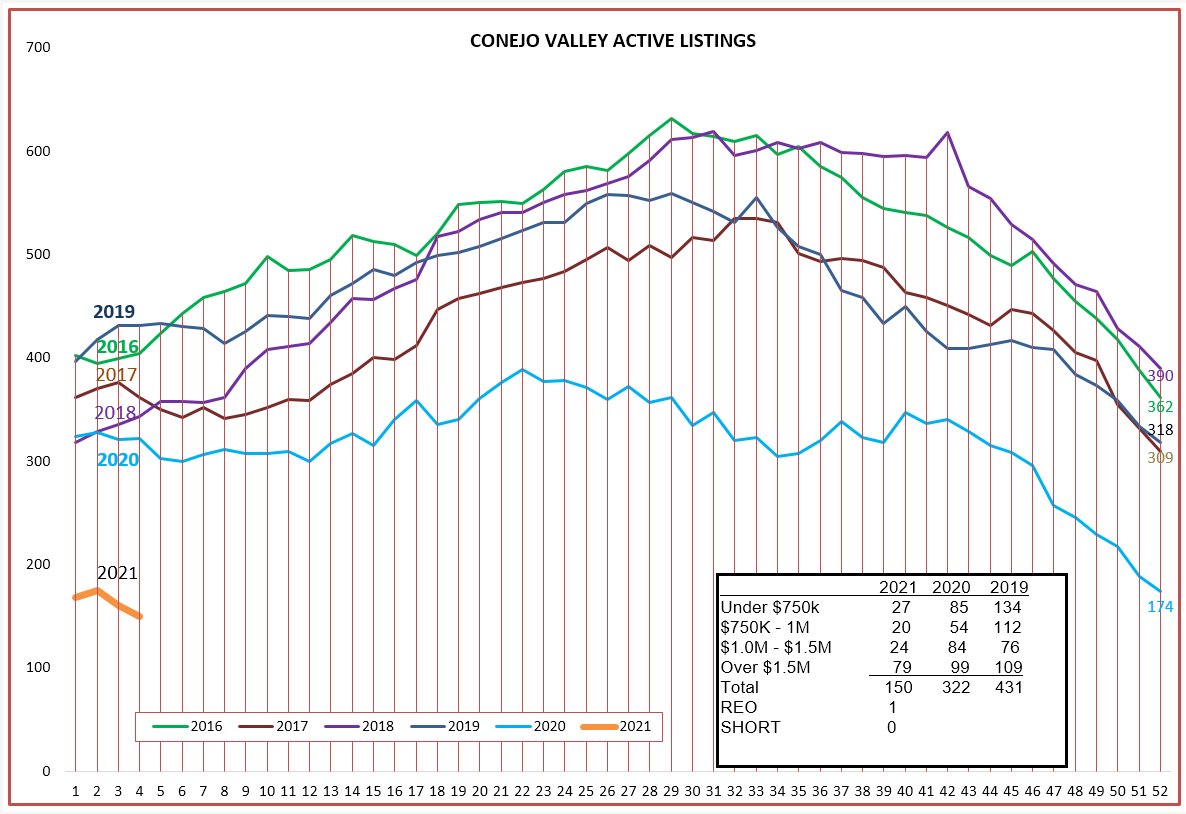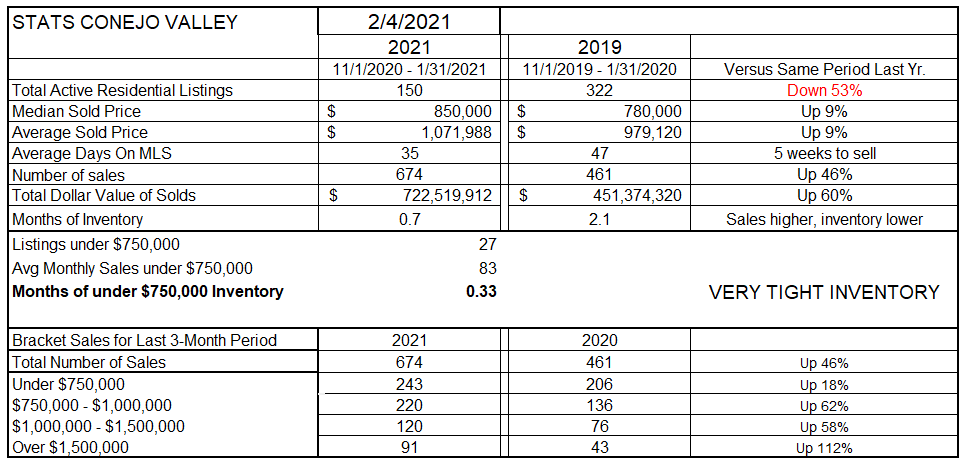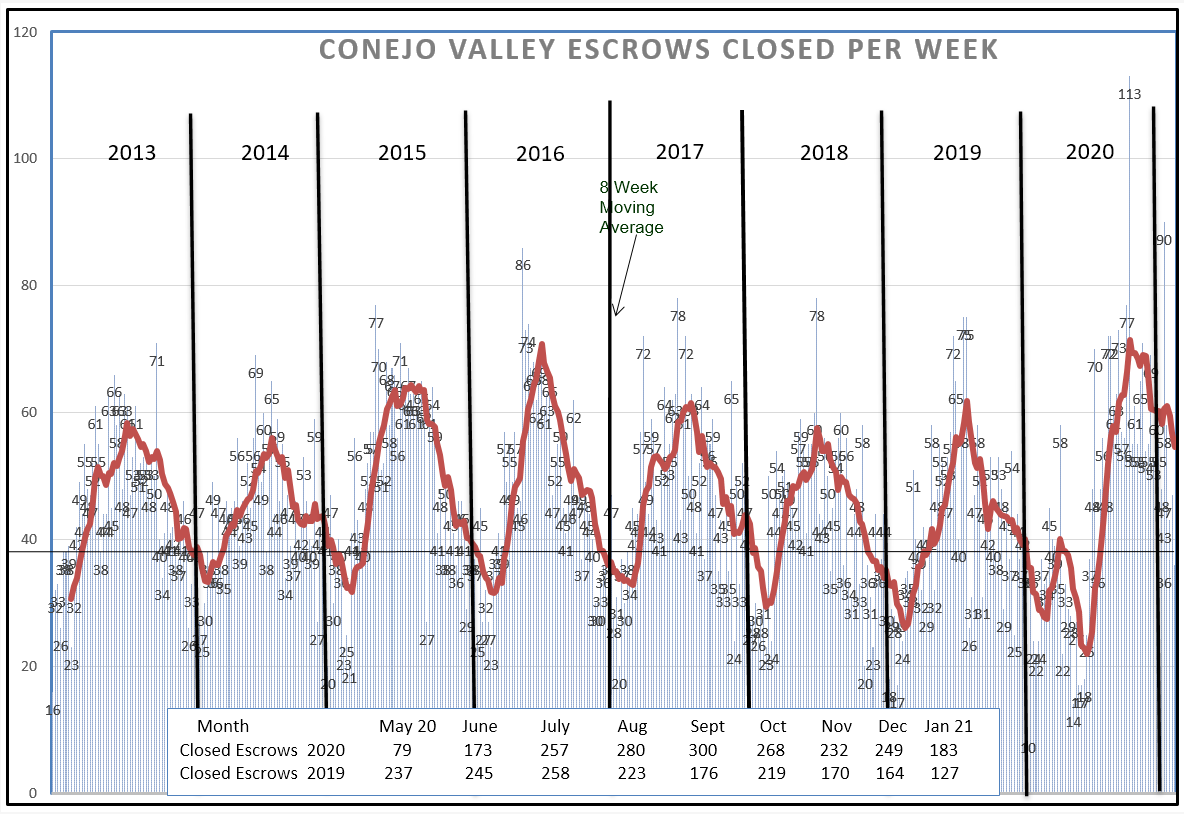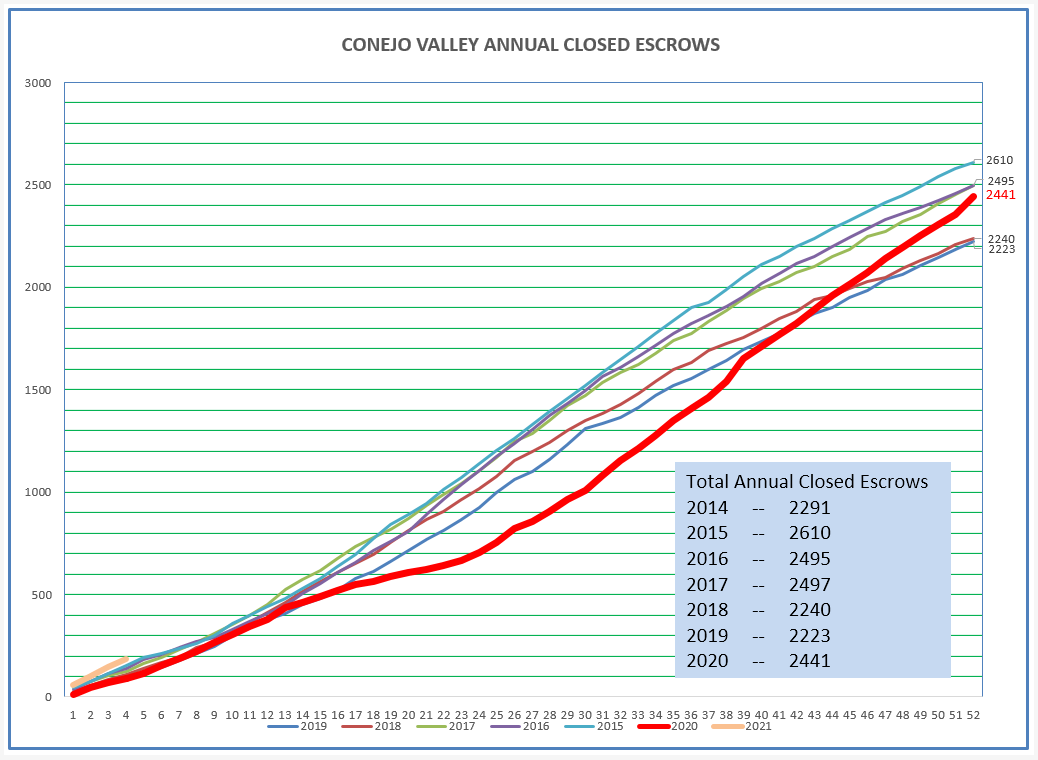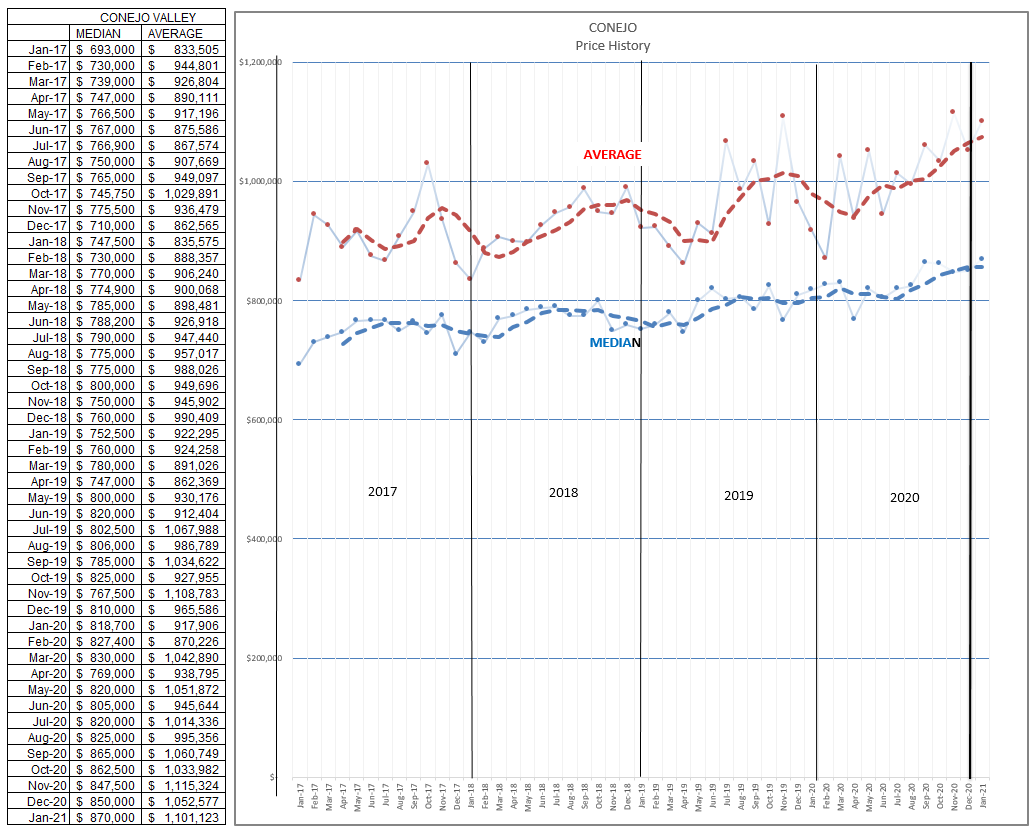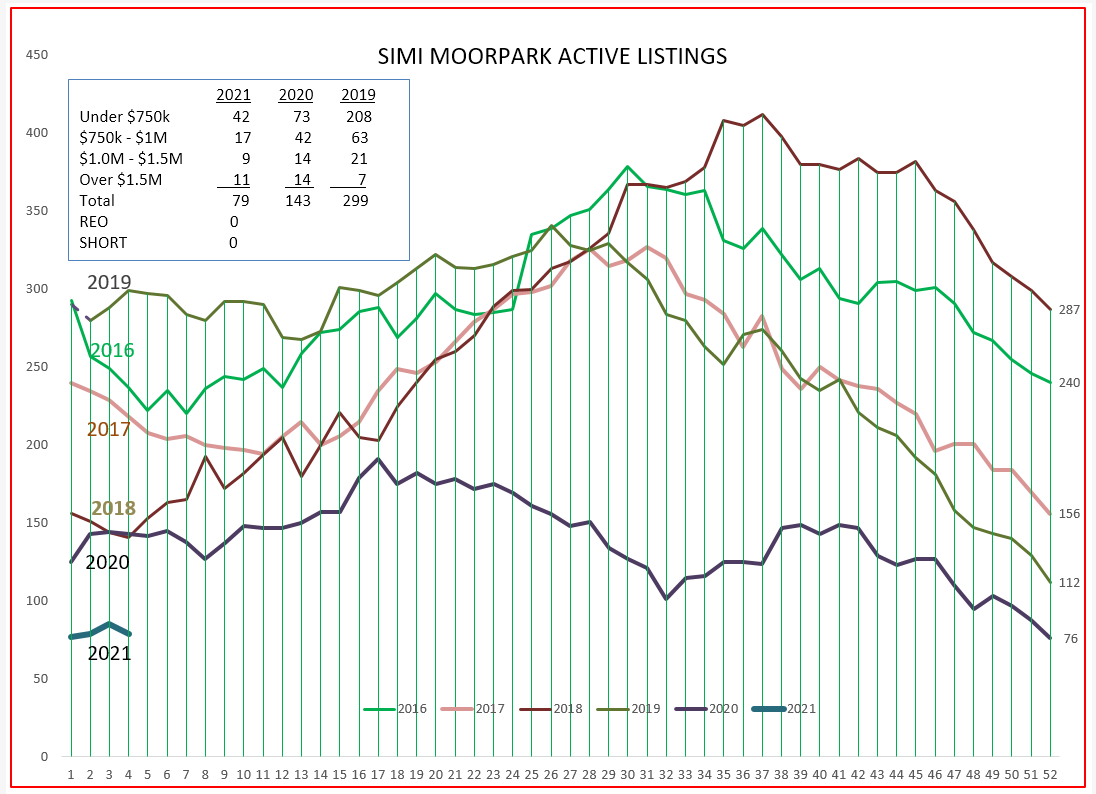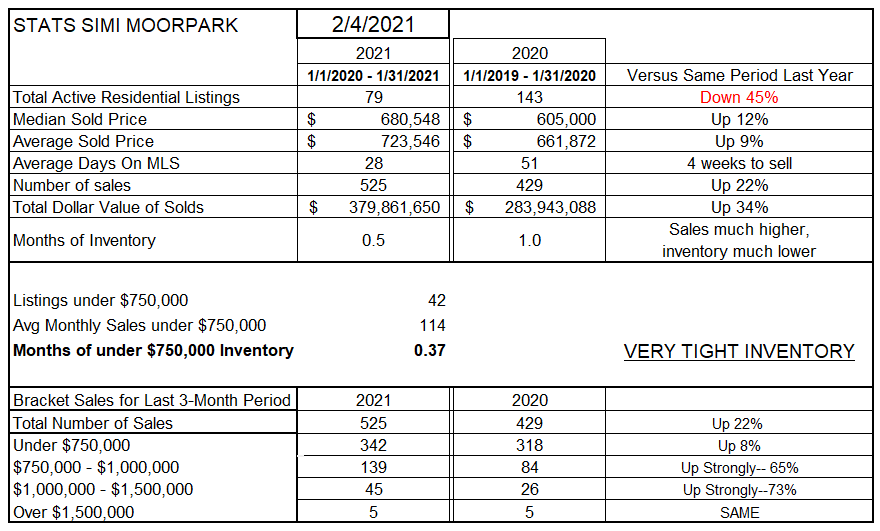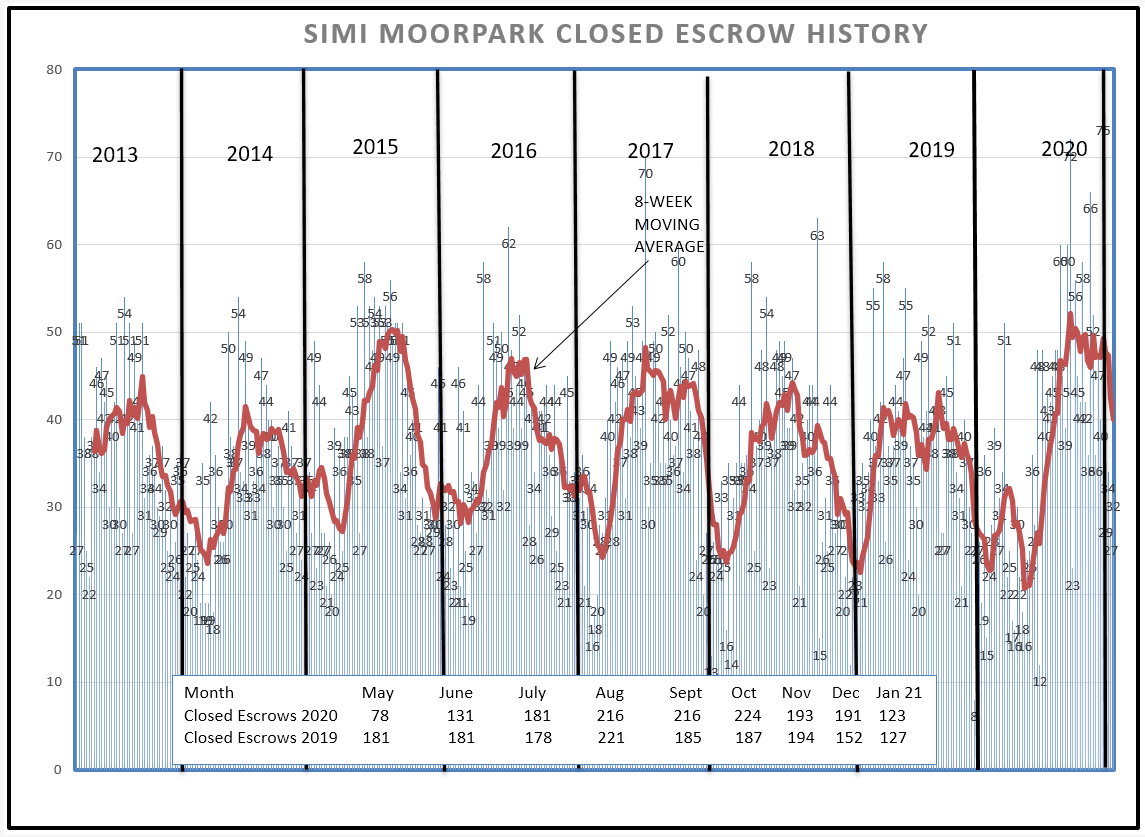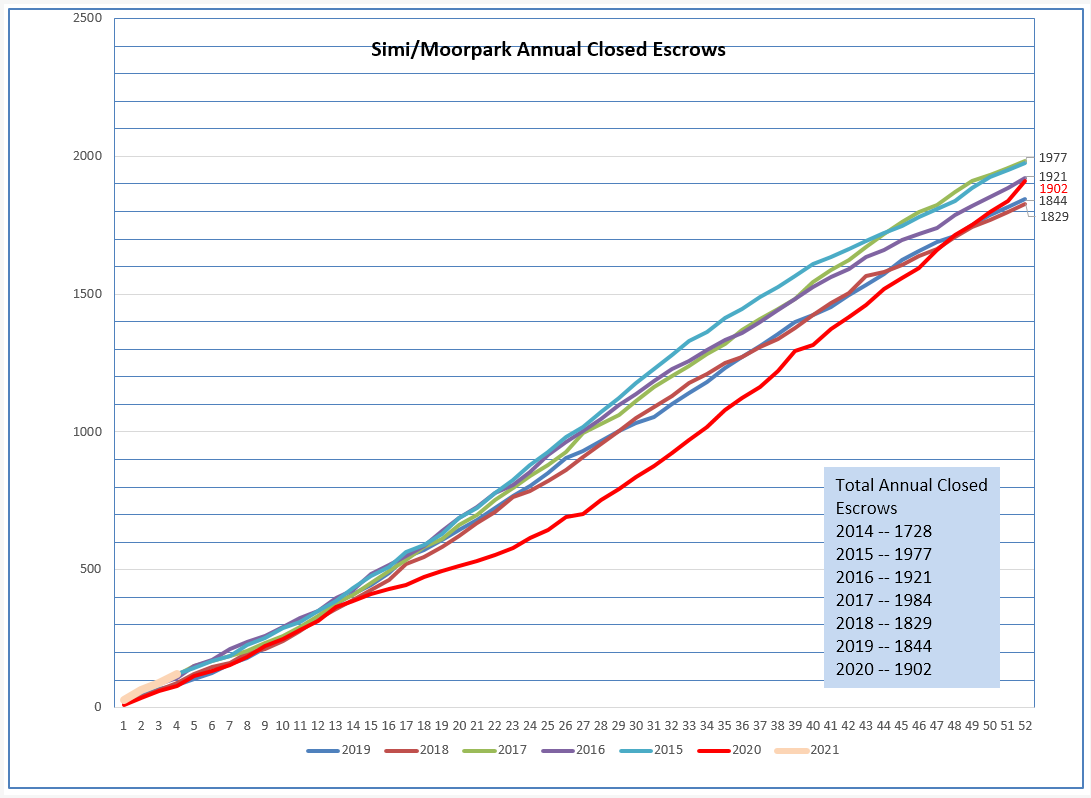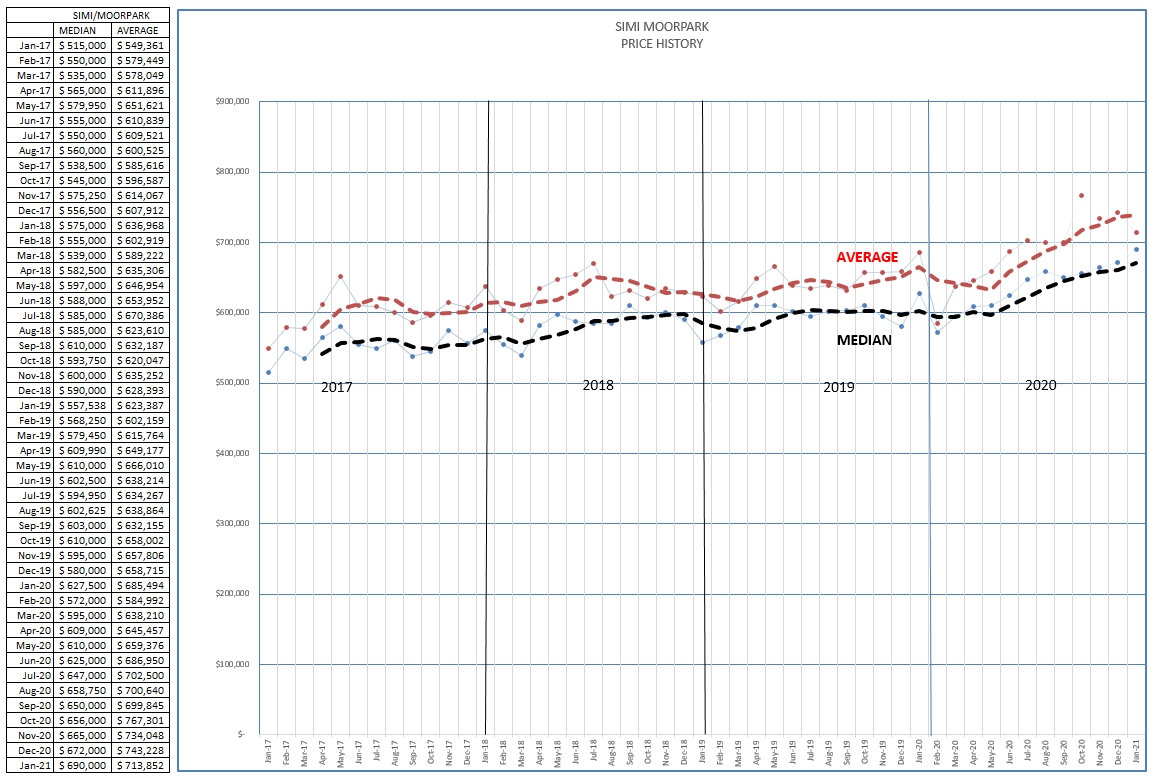The end-of-year holidays result in a dip in closings as the new year begins. As everyone sits down to Thanksgiving and then celebrates Christmas, Hanukkah, and the New Year, real estate listings go on hold. Properties are again listed as the new year begins. This causes closed escrows to hit annual lows in January, as the new listings enter escrow and close by mid-February. Not much is sold in December, hence not much closes escrow in January. There is a seasonal dip in sales.
Not so much this year. The market strength of 2020 carried right through these holidays (is it still a holiday if we are sequestered at home?) and the strong market continues. January was a very strong month for sales, but a very weak month for listings. How did we start out 2021 with regard to listings? The lowest number in my statistical records. 150 active listings, less than half as many as 2020, and only about a third of the number of listings in 2019. And those months in 2019 and 2020 did not have the influence of a pandemic.
But listings are only half the score. Think of a baseball score as Dodgers 6. They may have scored, but what did the other side score? Over the past three months, the number of Closed Escrows were up 46%, comparing those three months versus the same three months a year ago. The inventory is extremely low, while the number of sales increased considerably. What has this done to prices? Yes, it is called supply and demand. The inventory of all homes represent only three weeks of sales at the current level of sales. And for homes priced below $750,000, less than two weeks of sales. Only 27 homes priced below $750,000. Only 71 homes priced below $1.5 million. As to prices, comparing those three month periods, prices were up 9% year over year.
The total number of homes sold over the last three months is 46% higher than those same months last year. Breaking those down into price segments (the lower portion of this chart), the smallest increase was for homes priced under $750,000, only an 18% increase in number of homes sold. Some of that is due to the increase in prices. The median price for Conejo Valley homes is now $850,000, so many of the lower priced homes have moved into the next category. The next two segments, priced between $750,000 and $1 million, and those priced between $1 million and $1.5 million, were both up around 60% for these three months. And the final group, the number of escrows for homes priced in excess of $1.5 million more than doubled. Sales remain unbelievably strong.
Let’s look at those sales in two different charts. The first shows the history of sales over many years, and each year presents a story that makes that year unique. At the beginning of this blog, I discussed why the early part of the year shows a dip. While we see that dip every year, notice the high level of sales at which the dip is taking place in 2021. I direct your attention to the box at the bottom of the chart, which records the monthly number of closed escrows for each month, compared to the previous year. Except for the May and June slowdown due to the initial Covid outbreak, sales have been very, very strong. Note that 2020 had a double dip, courtesy of Covid.
The chart below tracks the cumulative number of sales that took place as the year progressed. This chart does a good job of describing how sales were affected by Covid and how they recovered strongly, ending the year with a normal number of sales. And you will notice that 2021 has begun stronger than any other year on the chart.
Finally, since low inventory and strong sales have caused prices to increase, let’s see how the graph shows pricing has moved over the past four years. This chart is based on monthly (not three months) prices experienced, both average and median. The space between the two lines is caused by the influence of higher priced homes. The more distance between the lines, the higher the percentage of high-priced homes that month. The steep rise in prices can be readily seen. In January 2020, the median price of $818,700 has changed to $870,000 in January 2021. The Average price has changed from $917,906 to this year’s $1,101,123. It has been a good year to own a home.
Simi Valley/Moorpark has the same pressures, but the mix of closed escrow prices weigh heavily on the lower end of the market, below $750,000. Also, Simi/Moorpark has struggled with extremely low inventory throughout the entire year. This area only has half the number of homes available in inventory. 79. And only 42 priced below $750,000.
Let’s explore how this dearth of inventory has affected both sales and prices. Inventory is down 45% from last year, which was the lowest year on record. Until this year. Prices up 9-12%. Even with the absence of inventory, sales increased by 22%. The inventory currently represents only two weeks of sales, closer to one week for homes priced below $750,000. Yes, those 42 homes. Yikes. Look at the lower end of this chart. Sales in the under-$750,000 range increased 8% versus a year ago (three months versus three months). Wy only 8%? Because the inventory is not available to sell. Increased sales in homes priced between $750,000 and $1 million, and between $1 million and $1.5 million, were up around 70%. The median sold price has jumped from $605,000 to the current $680,000. The median, “normal” price of the preponderance of homes in Simi Valley has until last year been $600,000. It is now pushing $700,000.
Let’s look at the closed escrow charts for Simi/Moorpark. Sales are very consistent, because the inventory is acting as a governor. Sales could easily increase, but the lack of inventory does not allow it to increase. 42 listings under $750,000.
The second closed escrow chart shows we are following the pattern set by the previous years. Given more available inventory, this chart would look considerably different.
What has all this done to prices in Simi Valley and Moorpark? Both Average and Median soaring. Median prices at the beginning of the year were close to $600,000. Median price in January 2021 is $690,000. When there is not much available to sell, and when the demand is high, supply and demand is pushing prices higher and higher.
This tome does not address all the market factors. What about interest rates, the number of people leaving California, the lack of available workforce housing, the impact of millennials, the movement from the city to the suburbs? There is never any one answer why things have happened.
Sometimes I would come home from work and announce to my wife that the stock market hit record highs. She would ask why that happened. I would enumerate the Fed rate change, earnings reports from certain companies, speculation by funds, all sorts of “reasons”. Then I would finally admit the real reason why prices went up. More people bought than sold. That is what is happening today. More people are interested in buying than selling. It’s called a market.
Stay safe, stay smart. This will be over soon. Use this time to learn how to do your job better, remotely, virtually. We will never return to the way things used to be. This pandemic has caused changes to take place quickly, has forced us to adapt, has pushed us to explore different ways to work and live. Amazon started out as a different way to sell books. Amazon sales have now surpassed $1 billion every day. Many of the trucks I see seem to be decorated with a smile. Zoom meetings have made us appreciate the time it took to travel, stay at hotels, the cost of air travel. A zoom meeting now accomplishes in a few hours what it took three days to do only a year ago. Some of these changes are good changes.
Chuck
